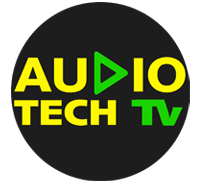In the world of music, there’s a special tool called a Digital Audio Workstation, or DAW for short. Think of a DAW as a conductor for creating music on a computer. It’s like magic, where technology and imagination come together to make beautiful songs. Let’s take a closer look at what DAWs are and how they make music happen.
The Beginnings of DAWs
Before DAWs, musicians had a tough time recording and editing their music. They had to use analog equipment like tapes, which could be quite a challenge. But things changed in the late 20th century when DAWs came into the picture. These are computer programs that help people make music without needing lots of complicated equipment.
Parts of a DAW
A DAW is like a special toolbox for making music. It has different tools inside:
Recording: With a DAW, you can easily record your singing or playing instruments. It’s like capturing your music on the computer.
MIDI Music: DAWs also understand something called MIDI, which is like a language for electronic music. You can use it to control instruments on your computer.
Editing: DAWs have tools for cutting, copying, and fixing mistakes in your music. You can even change how fast or high a note sounds!
Virtual Instruments: Inside the DAW, you’ll find virtual instruments, like a keyboard or drums. You don’t need real ones; the computer does it for you.
Mixing and Effects: DAWs help you make your music sound better by mixing and adding special effects.
Audio Paths: DAWs let you choose where the music goes in your project, like sending it to different parts for special effects or making it louder or softer.
Projects: You can organize your music projects in a DAW, which is handy if you’re working on lots of songs.
Different Types of DAWs
There are many different DAWs available. Some of the popular ones are:
Pro Tools: It’s often used in professional studios because it’s good at editing and mixing.
Logic Pro: This is from Apple and comes with lots of instruments and effects.
Ableton Live: It’s great for making electronic music and live performances.
FL Studio: Easy to use and loved by electronic music makers.
Cubase: Famous for composing music and making music for movies.
The Future of DAWs
The world of music is always changing, and DAWs are changing with it. In the future, we might see more online music collaboration, smart features that help you make music, and virtual instruments that sound even more like real ones.
Conclusion
DAWs are like the conductors of the music orchestra, helping people turn their ideas into songs. They’ve made making music easier and more fun. So whether you’re just starting or you’ve been making music for a while, a DAW is your musical friend, ready to help you create your own special tunes.
